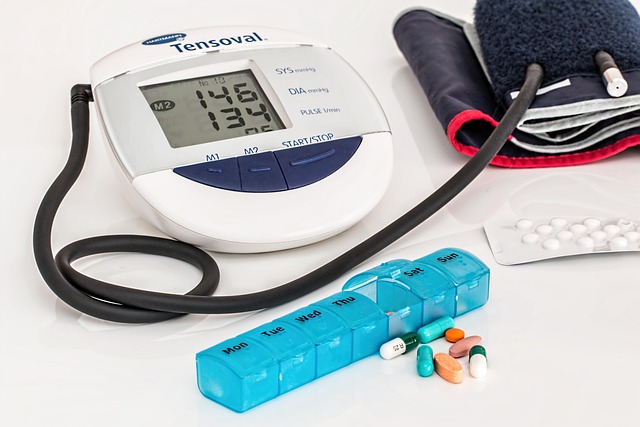Understanding Triple Negative Breast Cancer – What Women Should Know
Triple negative breast cancer is a rare and aggressive form that differs from other types in how it grows and responds to treatment. Many women are unaware of what makes it unique or why early detection can be more challenging. Understanding its key characteristics and how it’s managed can help women stay informed and proactive about their health.

Triple negative breast cancer affects thousands of women annually in the United States, disproportionately impacting younger women and those of African American and Hispanic descent. Unlike other breast cancer types, this form lacks estrogen receptors, progesterone receptors, and HER2 protein expression, which limits targeted therapy options but doesn’t eliminate hope for successful treatment.
What Is Triple Negative Breast Cancer?
Triple negative breast cancer occurs when cancer cells test negative for estrogen receptors, progesterone receptors, and human epidermal growth factor receptor 2 (HER2). This absence of these three receptors means the cancer doesn’t respond to hormone therapy or HER2-targeted treatments that work effectively for other breast cancer types. The condition typically grows and spreads more quickly than hormone receptor-positive breast cancers, requiring prompt diagnosis and aggressive treatment approaches. Medical professionals classify this subtype through specialized testing that examines tissue samples for the presence or absence of these specific receptors.
Triple Negative Breast Cancer Signs
Recognizing early warning signs can lead to faster diagnosis and treatment initiation. Common symptoms include a new lump or mass in the breast or underarm area, changes in breast size or shape, skin dimpling or puckering, nipple discharge (particularly if bloody), and persistent breast or nipple pain. Some women notice skin texture changes resembling an orange peel, called peau d’orange, or experience nipple inversion. Unlike some other cancers, triple negative breast cancer often presents as a palpable mass rather than appearing first on mammograms, making self-examination and clinical breast exams particularly important for early detection.
How Triple Negative Breast Cancer Differs
The primary distinction lies in the absence of targetable receptors, which significantly impacts treatment strategies. While hormone receptor-positive breast cancers can be treated with hormone-blocking medications like tamoxifen or aromatase inhibitors, and HER2-positive cancers respond to targeted therapies like trastuzumab, triple negative breast cancer requires different approaches. This subtype tends to be more aggressive, with higher grade tumors and faster growth rates. It also shows different patterns of metastasis, more commonly spreading to the brain and lungs rather than bones. However, triple negative breast cancer often responds well to chemotherapy, particularly neoadjuvant chemotherapy given before surgery.
Treatment Options for Triple Negative Breast Cancer
Treatment typically involves a multimodal approach combining surgery, chemotherapy, and radiation therapy. Chemotherapy remains the cornerstone of systemic treatment, often including combinations of drugs like doxorubicin, cyclophosphamide, and taxanes. Newer approaches include immunotherapy drugs such as pembrolizumab, which helps the immune system recognize and attack cancer cells. PARP inhibitors like olaparib show promise for patients with BRCA1 or BRCA2 gene mutations. Clinical trials continue investigating novel therapies, including antibody-drug conjugates and other targeted treatments specifically designed for triple negative breast cancer.
| Treatment Type | Provider/Institution | Cost Estimation |
|---|---|---|
| Chemotherapy (full course) | Major Cancer Centers | $10,000 - $30,000 |
| Immunotherapy (pembrolizumab) | Oncology Clinics | $12,000 - $15,000 per month |
| PARP Inhibitor Therapy | Specialized Treatment Centers | $8,000 - $12,000 per month |
| Surgical Treatment | Hospital Systems | $15,000 - $50,000 |
| Radiation Therapy | Cancer Treatment Facilities | $8,000 - $20,000 |
Prices, rates, or cost estimates mentioned in this article are based on the latest available information but may change over time. Independent research is advised before making financial decisions.
Awareness and Support for Women with Triple Negative Breast Cancer
Support systems play crucial roles in treatment success and emotional well-being. National organizations like the American Cancer Society, Susan G. Komen Foundation, and Triple Negative Breast Cancer Foundation provide resources, support groups, and educational materials specifically addressing this subtype. Many cancer centers offer patient navigation services to help coordinate care and connect patients with appropriate resources. Online communities and local support groups allow women to share experiences and coping strategies. Financial assistance programs through pharmaceutical companies, nonprofit organizations, and government programs can help manage treatment costs. Mental health support, including counseling and therapy services, addresses the emotional challenges that accompany diagnosis and treatment.
While triple negative breast cancer presents unique challenges, advances in research continue improving outcomes for women facing this diagnosis. Early detection, prompt treatment, comprehensive support systems, and ongoing clinical trials offer hope for better treatments and improved survival rates. Women should work closely with their healthcare teams to develop personalized treatment plans that address their specific needs and circumstances.
This article is for informational purposes only and should not be considered medical advice. Please consult a qualified healthcare professional for personalized guidance and treatment.




